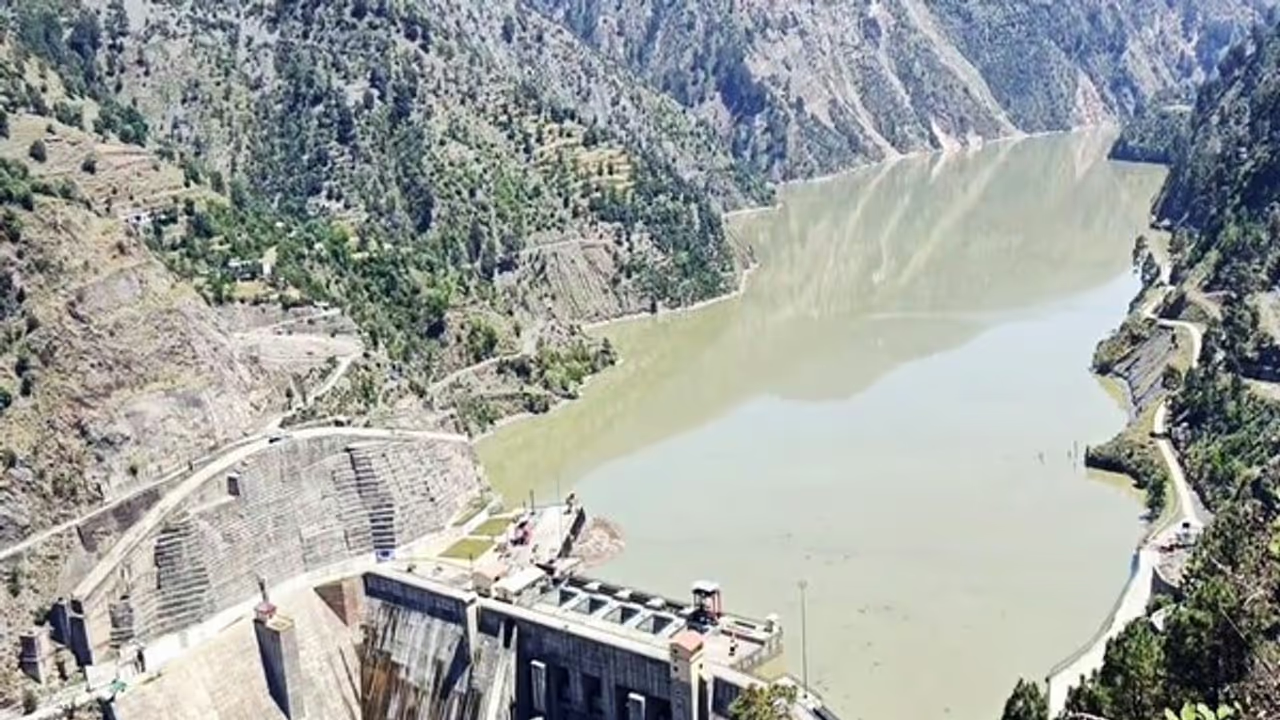Pakistan faces a water crisis ahead of the kharif crop season as the Mangla and Tarbela dams run low and India restricts Chenab river flow after suspending the Indus Waters Treaty, impacting irrigation and raising concerns of worsening shortages.
New Delhi: Pakistan is facing a serious water crisis ahead of the kharif (summer) crop sowing season due to dangerously low water levels in its two key reservoirs, Mangla on the Jhelum River and Tarbela on the Indus River. The situation has been further aggravated by India's regulation of the Chenab river flow and its decision to suspend the Indus Waters Treaty (IWT) in the aftermath of the recent Pahalgam terror attack.

The looming shortage may worsen in the coming weeks, particularly during the early phase of the kharif sowing season, a concern that was raised by Pakistani Prime Minister Shehbaz Sharif at an international conference on glacier preservation held last week in Dushanbe, Tajikistan. PM Sharif used the platform to draw global attention to India’s decision to put the 1960 Indus Waters Treaty in abeyance.
According to the latest estimates released by Pakistan’s Indus River System Authority (IRSA), the country is currently experiencing an overall 21% shortage in water flows and nearly 50% depletion in live storage capacity at Mangla and Tarbela dams. These two dams are vital for irrigation in Pakistan’s Punjab and Sindh provinces and also contribute significantly to the country’s hydropower generation.
The IRSA, while assessing water availability for summer sowing operations between May and September, expressed concern over the “sudden decrease” in inflows from the Chenab River at Marala, a consequence of reduced water supplies from India. The authority has officially declared a 21% overall shortage and has urged dam management and irrigation supply agencies to conserve water in light of what it termed a “crisis created by Indian short supplies in the Chenab River”.
Although the situation may improve if monsoon rainfall replenishes the catchment areas next month, agricultural activities in Pakistan will still heavily depend on how India regulates water flow from its own limited infrastructure on the Chenab River. India currently operates two key reservoirs, Baglihar and Salal, on the Chenab in Jammu and Kashmir. India has, to date, only flushed these reservoirs and cleared sediment to increase storage capacity. In addition, India has stopped sharing water flow data with Pakistan since suspending the Indus Waters Treaty following the Pahalgam terror attack.
Publicly available data on Pakistan's reservoir levels indicate that the Mangla dam currently holds less than 50% of its capacity, with 2.7 million acre-feet (MAF) of water out of a total 5.9 MAF. Similarly, Tarbela Dam holds just over 50% of its 11.6 MAF total capacity, with a live storage of approximately 6 MAF.
Indian officials point out that after the suspension of the IWT, New Delhi is under no legal obligation to share river flow data with Pakistan. This could pose significant challenges for Pakistan in managing floods during the monsoon season, especially since much of the Indus River system’s catchment area lies within Indian territory.
Agriculture in Pakistan’s provinces of Punjab and Sindh relies almost entirely on irrigation canals fed by the Indus River system, which in turn draws its water from the western rivers, Indus, Jhelum, and Chenab. Under the Indus Waters Treaty, India has exclusive rights over the eastern rivers, Ravi, Sutlej, and Beas, but limited infrastructure on India’s side has historically allowed Pakistan to benefit from the unutilised water.
While India is permitted to create storage infrastructure up to 3.6 MAF on the western rivers, it has not fully exploited this allowance, making Pakistan an unintended beneficiary until now. With India now asserting more control over these waters and halting cooperation under the IWT, Pakistan’s agricultural future, at least in the immediate term, appears increasingly uncertain.


